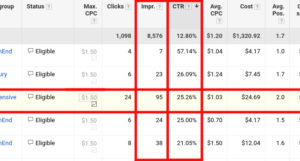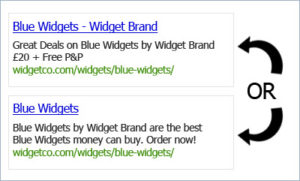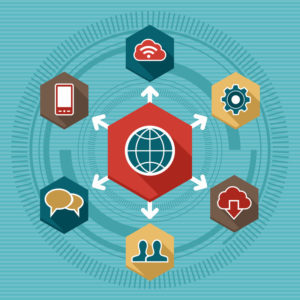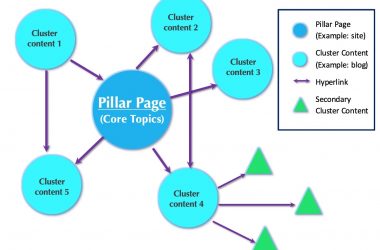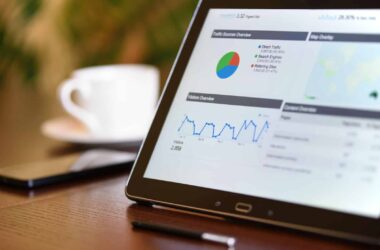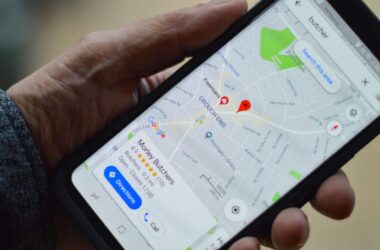What are Landing Pages?
SEO Landing Pages
SEO Landing Pages (Search Engine Optimised Landing Pages) are designed to attract organic search traffic from search engines. As organic traffic is ‘free’ in a sense, SEO Landing pages are effective for long-term publicity of a brand, product or service if the landing page ranks on the first Search Engine Results Page (SERP). In order for a web page to rank on the first SERP, link building, keyword optimisation, and usability are important factors to consider in order to build the authority and relevancy of a web page and to match users’ search queries. As such, SEO Landing Pages are content heavy and target a large set of keywords to attract a high volume of organic traffic. From a sales and marketing perspective, SEO Landing Pages are designed to qualify leads for conversion by informing or educating the visitor then guiding them to a conversion page – turning visitors into happy customers or subscribers.
PPC Landing Pages
PPC Landing Pages (Pay Per Click Landing Pages) attract search traffic by using paid advertising on SERPs. PPC Landing pages are designed to convert visitors into customers or subscribers. As such, content is kept to a minimum as to not detract visitors from the main goal of conversion, and often utilise imagery, video and testimonials to direct visitors to a conversion. PPC Landing Pages target a specific set of keywords that match queries for people who intend on making a purchase or subscription. As opposed to SEO Landing Pages, link building and bounce rates are not relevant for PPC Landing Pages as, despite these factors, a PPC Landing page will appear on the first page of the SERPs. Rather, Click Through Rate (CTR), Conversion Rate and Return on Advertising Spend (ROAS) are metrics that should be focused on. PPC Landing pages are usually set up to support temporary campaigns.
Using PPC to enhance SEO
Using PPC as a Keyword Research Tool
The insights generated from PPC Landing pages can help you to accurately identify the keywords that are potentially driving conversions. The keywords that obtain the highest Impressions and CTR are the keywords that you should build content upon in your SEO strategy. Impressions show you the number of times your ad appears on the SERP while the CTR shows you how often your ad was clicked on. Therefore, a high number of impressions and high CTR for a keyword reflect the reach of that keyword, and the more reason you should use it in your SEO content strategy.
Use PPC to test performance of ad copy and landing pages
When using PPC, you can create multiple ads, so it wouldn’t hurt to experiment with different ad titles and copy. Experimenting with different ad titles and copy allows you to identify which ads receive the higher number of impressions and higher CTR, to which you can use the best ad for your SEO Landing Page. While you’re at it, don’t be afraid to experiment with your landing page to see which format or style will achieve the better conversion rate.
Use PPC retargeting to bring back lost SEO conversions
PPC gives you the added advantage of using retargeting to bring back lost conversions. According to Wordstream, the average conversion rate is 2.35%, while a conversion rate above 5% is considered awesome. Retargeting, also known as remarketing, is a way to bring back those lost conversions by tracking your website visitors around the web and serving them your ads on other web pages that are part of an Advertisement Display Network. As explained, you can use PPC to set up remarketing to bring lost conversions back to your website.
Using PPC as a branding enhancer
Optimise upon the opportunities that a PPC Landing Page presents to you and your business. Given the first page ranking of a PPC Landing Page, use it to your advantage to spread awareness of your brand, products and service, and go a step further by earning backlinks. Although content is generally streamlined on a PPC Landing Page to direct visitors to a conversion, consider making room for a highly-linkable asset that visitors can link back to. This may come in the form of an infographic, apps, browser-based tools, videos, and almost any visual media (provided it’s relevant and valuable).
To PPC or not to PPC: You decide
The decision to use PPC comes down to a matter of perspective. Some people may see the inflow of organic traffic to an SEO Landing Page as ‘free’, whilst forgetting the costs (time, energy, money) involved in optimising an SEO Landing Page for a first page ranking. Similarly, some people will view PPC as an expensive form of advertising, whilst forgetting the potential to leverage upon its effective short-term benefits and the insights (as discussed), which can then be applied to, and boost an SEO strategy.

